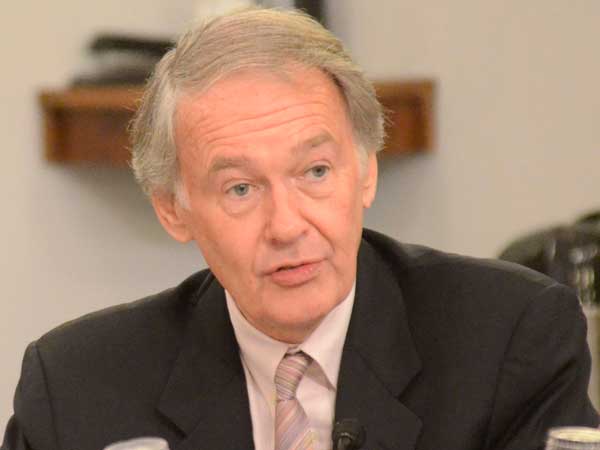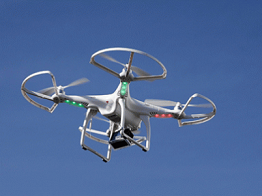Sen. Markey: Privacy Regs Should Precede Loosening Drone Rules
Sen. Ed Markey is renewing his call for privacy protections after the Federal Aviation Administration proposed to loosen its commercial drone rules to allow commercial drones to be flown over people and at night "under certain conditions."

The FAA's goal in the draft proposal is to open up "an entirely new realm" of commercial drone possibilities, including for newsgathering and TV and film production as well as infrastructure inspection, emergency response and aerial surveying, though it is aerial surveillance Sen. Markey is most concerned about.
Related: CTIA Says Commercial Wireless Should Be Drone Home
The FAA does already allow for night flying and over people, but only under a waiver program that has drawn thousands of requests. The FAA says it has not received any reports of accidents under that waiver program, which is one of the arguments for loosening the rules. For night flights, the conditions are that pilots get training on night flying and the UAAS (unmanned aerial vehicles) would have to have an anti-collision light.
Flights over people would not require waivers anymore, either, but with plenty of safety-related conditions depending on the level of risk to people on the ground, like rotating parts or the weight of the drone.
Drone manufacturers would have to declare a product meets a specific category of conditions--there will be three separate categories a drone could come under--and monitor to make sure the product being produced continued to meet those standards. They would also have to correct any safety defects they identify after manufacturing.
Markey said privacy protections and other rules established by Congress should be in place before the FAA widens those roving electronic eyes in the skies.
The senator has for years been promoting legislation, the Drone Aircraft Privacy and Transparency Act--and will introduce it yet again--a bill that would create a framework for informing the public, not only about when and where drones would be flying and who was at the controls--or at least who owned the drone--but also related to data collection and minimization, disclosure and law enforcement access to that data. It also deals with licensing and operation on the drones.

“Privacy cannot be an afterthought as the FAA seeks to make it easier and safer for commercial drones to take flight,” said Markey. “Drones have the capability to collect treasure troves of sensitive personal information using technologies like facial recognition and automated license plate readers, yet the FAA has failed to establish any baseline privacy protections, despite its obligation to integrate drones into the national airspace."
Markey said Congress must ultimately be at the controls.
DJI, which makes civilian drones and imaging technology, was pleased with the draft, particularly a "performance-based standard for measuring safety, which allows manufacturers to develop creative ways to meet that standard," a standard DJI had proposed, though it said the safety testing methodology in the draft was different and needed scrutinizing.
“Drones prove every day that they belong in the sky doing important work for America, and everyone benefits when it is easier for professionals to safely fly over people and at night,” said Brendan Schulman, DJI VP of policy and legal affairs. “Drones have helped rescue more than 200 people from peril around the world, and drones help professionals do their work faster, safer, more efficiently and at a lower cost. Removing the barriers to routine night operations and flight over people will mean more benefits for more people.”
Multichannel Newsletter
The smarter way to stay on top of the multichannel video marketplace. Sign up below.
Contributing editor John Eggerton has been an editor and/or writer on media regulation, legislation and policy for over four decades, including covering the FCC, FTC, Congress, the major media trade associations, and the federal courts. In addition to Multichannel News and Broadcasting + Cable, his work has appeared in Radio World, TV Technology, TV Fax, This Week in Consumer Electronics, Variety and the Encyclopedia Britannica.

